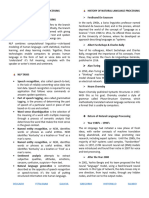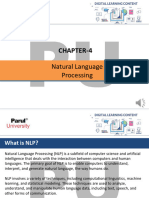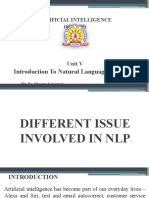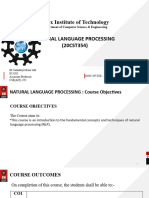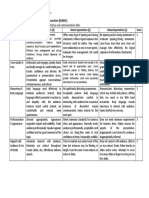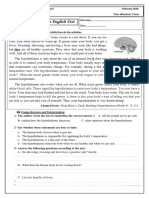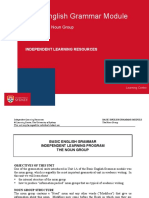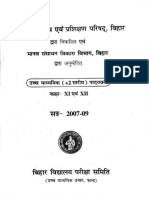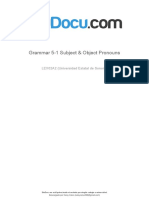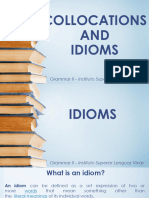0% found this document useful (0 votes)
3 views24 pagesNLP_Content2
The document provides an overview of natural languages and their features, emphasizing the importance of context in understanding meaning. It introduces Natural Language Processing (NLP) as a sub-field of AI that enables computers to analyze and understand human languages, highlighting various applications such as voice assistants, language translation, and sentiment analysis. Additionally, it outlines the stages of NLP, including lexical analysis, syntactic analysis, and text normalization, which are essential for processing and converting natural language into a format that computers can understand.
Uploaded by
revathichellakumarCopyright
© © All Rights Reserved
We take content rights seriously. If you suspect this is your content, claim it here.
Available Formats
Download as PDF, TXT or read online on Scribd
0% found this document useful (0 votes)
3 views24 pagesNLP_Content2
The document provides an overview of natural languages and their features, emphasizing the importance of context in understanding meaning. It introduces Natural Language Processing (NLP) as a sub-field of AI that enables computers to analyze and understand human languages, highlighting various applications such as voice assistants, language translation, and sentiment analysis. Additionally, it outlines the stages of NLP, including lexical analysis, syntactic analysis, and text normalization, which are essential for processing and converting natural language into a format that computers can understand.
Uploaded by
revathichellakumarCopyright
© © All Rights Reserved
We take content rights seriously. If you suspect this is your content, claim it here.
Available Formats
Download as PDF, TXT or read online on Scribd
/ 24




















